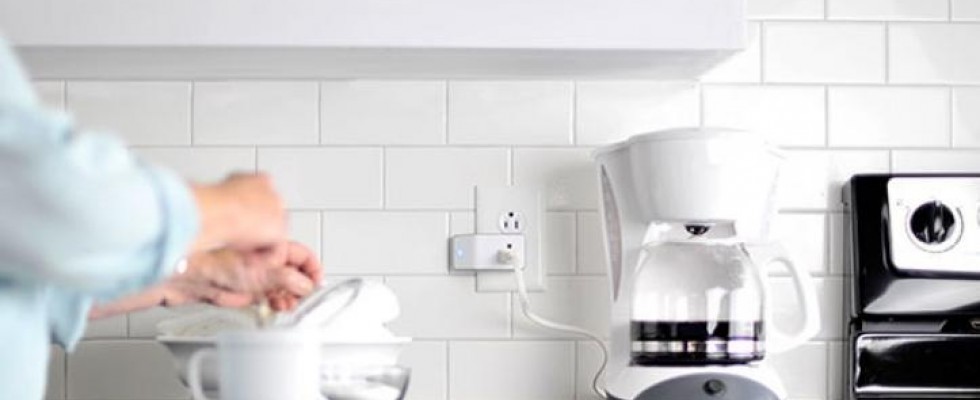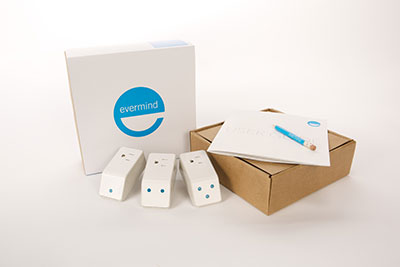
Today’s seniors are increasingly active, healthy and confident in their independence. In spite of the associated risks, they are still eager to live in their own homes for as long as possible. A whole spectrum of products in the HME market is designed to enhance accessibility or modify the home environment to allow for aging in place, from ramps and shower bars to more institutional products such as pressure sensors on beds and toilets. If necessary, cameras can be installed in every room to ensure that there is always a watchful eye on the patient. But for those who don’t need that level of invasiveness or modification, there are other products that can simply offer some peace of mind. A new technology, Evermind, protects those who live alone (such as aging seniors or those with autism who are transitioning to adulthood) by detecting when small electrical appliances, such as coffeemakers, televisions or bedside lamps, are switched on and off. Dr. Dave Gilbert, a technologist and entrepreneur, developed Evermind so that his 96-year-old grandmother could live independently in her own home. “Knowing that she is in her routine gives me peace of mind,” says Gilbert. Evermind uses built-in wireless technology embedded into a sensor that plugs into the appliance and the wall. The sensor detects when the appliance is switched on and off, then forwards this information to a preselected device, such as a smartphone or tablet. Based on appliance activity, concerned family members or caregivers can receive text messages or email notifications showing that their loved one is in his or her normal routine. They can also be alerted to deviations in normal activity that might be cause for concern. For example, if an aging grandmother doesn’t turn on the evening news, her grandson will be notified via text and can check on her. The Evermind technology is suitable for a variety situations with varying degrees of needs and challenges. “Evermind let me know my daughter had been watching TV in the middle of the night,” says Toni, age 42, caregiver to her 18-year-old daughter with autism and Attention Deficit Hyperactivity Disorder (ADHD). “Turns out she was taking her Ritalin too late in the day and it was keeping her up.” Evermind boasts many innovative features, explained below.
- Easy-to-use technology—Evermind is technologically advanced enough for the caregivers (sending text messages and emails and featuring an online dashboard), yet incredibly simple for the user.
- Built-in Wi-Fi—Engineers designed Evermind with unobtrusive wireless sensors—no invasive devices and no home Internet connection required. There is a data modem built into sensor No. 1 that will transmit data from all of the sensors to the Evermind network via cellular signal.
- Instant setup—Evermind doesn’t require drilling or extensive modifications to the home. The portable sensors can easily be reassigned to other appliances, moved to different outlets or even moved to a different house.
- Online dashboard—Caregivers have access to an online account with a dashboard to manage text message alerts and to review patterns related to long-term wellbeing.
Evermind’s sensors work with most common household appliances, including lamps, coffeemakers, microwave ovens, TVs, curling irons, hair dryers, washing machines and more. The technology is also usable with some HME products that may be in the home already, such as lift chairs and CPAP machines. Other alert solutions on the market include wearable medical alert devices that will alert caregivers or send help if the wearer has fallen. While medical alert devices are certainly helpful, they are not without problems.
- People forget to wear or they are reluctant to wear the device.
- Failure to charge the device or replace the batteries renders it inoperable.
- A button cannot be pressed by an incapacitated person.

Some of the newer devices on the market try to compensate by detecting the fall without the need to push a button, but the motion of sitting down sometimes mimics a fall.
Proactive Caregiving
In many cases, adult children caring for older parents will invest in a medical alert device after their loved one’s first fall. In the middle of their fast-paced, multitasking lives, it is easy to take a reactive approach to caregiving. However, thanks to some of the newer smart-home technology choices, there are proactive ways to detect issues before a crisis occurs. Through ambient awareness—what social scientists call being connected to others through social media or digital information—many of us have daily reassurance that our loved ones are okay. But studies show that many seniors above the age of 65 don’t even have Internet in their homes. Unlike the aging baby boomer generation, many have never owned a computer or a cellphone. So what happens when a caregiver calls and no one answers the landline phone? He panics and leaves work to drive over, or perhaps contacts a neighbor who can stop in, only to find out his loved one just didn’t hear the phone.
Talking It Out
Sometimes the hardest part of finding a solution is convincing someone that they need a little extra support. Here are some useful discussion points that can help adult children alleviate their parents’ concerns.
- It’s more for me than you. The loved one should know that using a smart-home technology is about peace of mind for the caregiver, and that he will feel better if they can agree on a solution together.
- It’s not about age. Smart-home technology can be for anyone who lives alone, regardless of age. Caregiving technologies can help latchkey kids and college students living alone, as well as people who are aging independently.
- I respect your privacy, independence and dignity. Talk to them about the new passive monitoring solutions available. Some devices, such as Evermind, don’t have video cameras or motion sensors, and they are very easy to use and install (without making any modifications to the home or routine).
For some families, a mix of caregiving technologies may be the best solution. For example, if someone already has an emergency button, Evermind can act as a backup system by alerting caregivers to changes in activity that could be a cause for concern. Donita, a caregiver to her mother, age 82, enjoys the peace of mind Evermind brings her. “Earlier this year, Mom felt well enough to drive to a doctor’s appointment a few miles from the house, but a storm came up while I was teaching,” says Donita. “I wondered if Mom made it home OK and quickly checked Evermind to see that she’d turned on the microwave at lunchtime. I wouldn’t have been able to make a phone call then because I was teaching, but quickly looking on my Evermind account was reassuring.”
